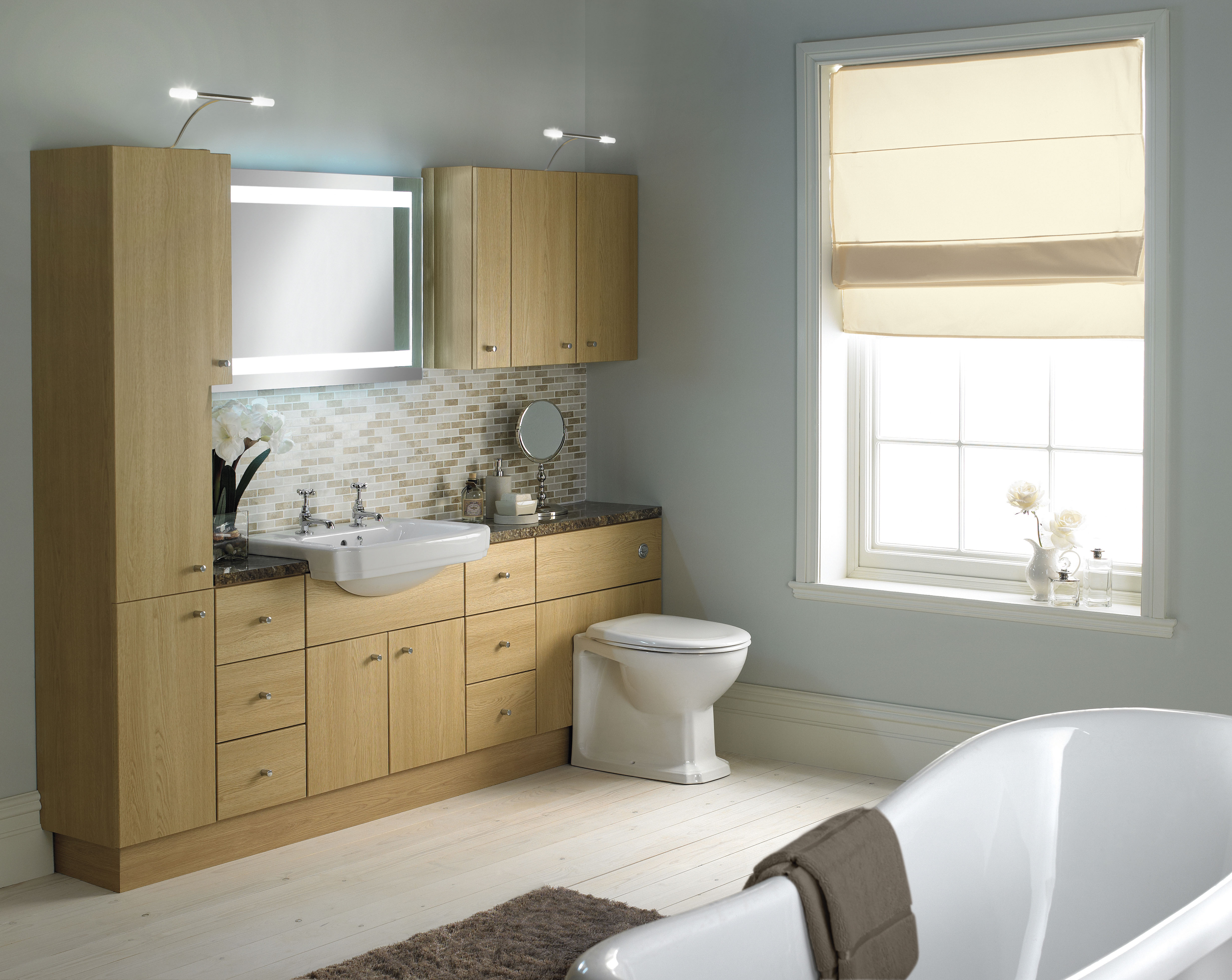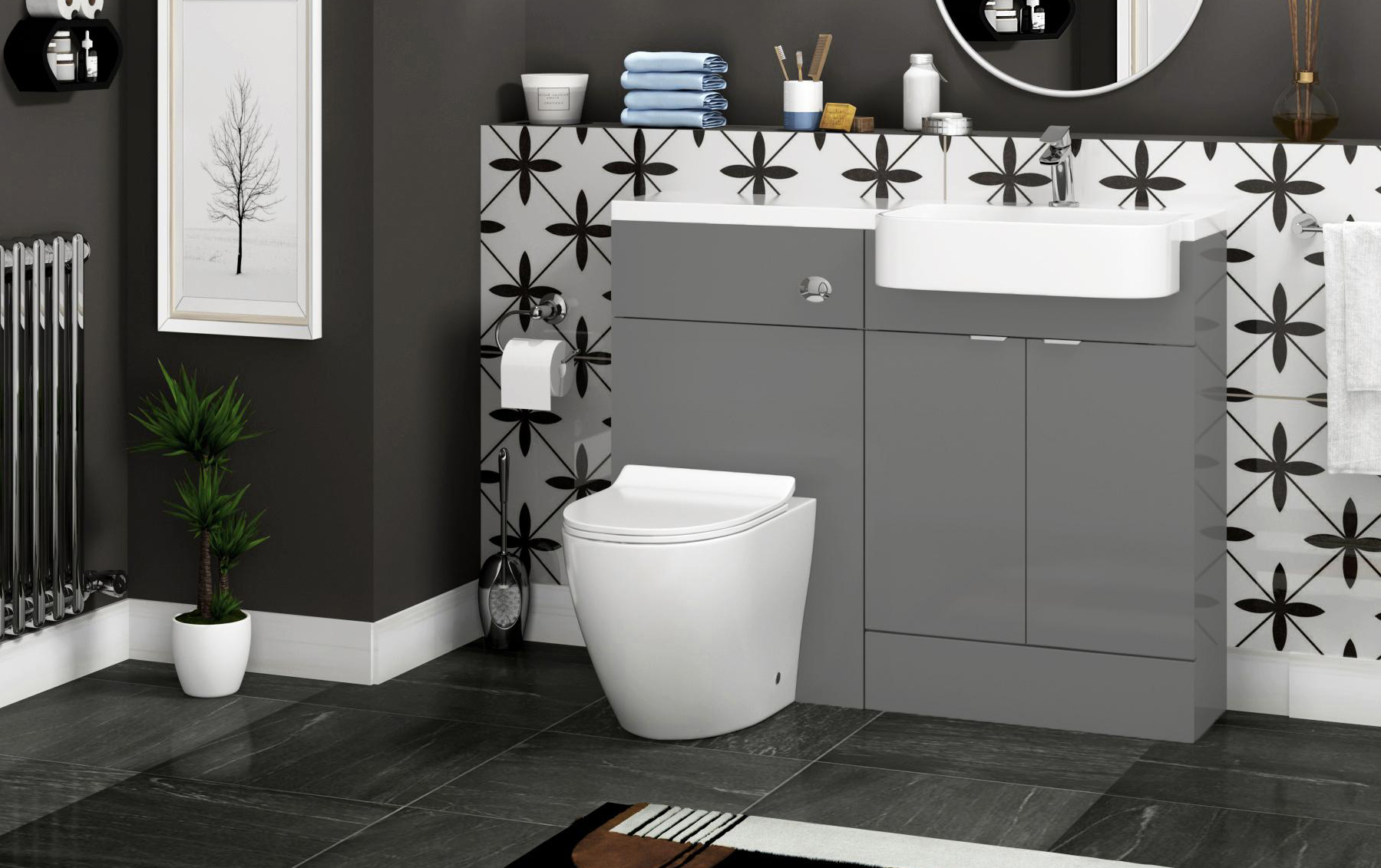Top UK Suppliers of Fitted Bathroom Cabinets

The selection of fitted bathroom cabinets significantly impacts both the functionality and aesthetic appeal of a bathroom. Understanding the range of suppliers and their offerings is crucial for informed decision-making. This section details leading UK suppliers, comparing their price points and examining customer feedback.
Major UK Suppliers of Fitted Bathroom Cabinets and Their Specializations
Several major UK suppliers cater to diverse bathroom styles and budgets. The following list provides an overview of five prominent companies and their areas of expertise:
- Bathroom Takeaway: Specializes in a wide range of styles, from contemporary to traditional, offering both pre-built and bespoke options. Website: [This would contain a real website address if I were able to access and browse the internet. Please replace with the actual URL.]
- Victoria Plum: Known for its extensive selection of modern and contemporary cabinets, offering various sizes and finishes. Website: [This would contain a real website address if I were able to access and browse the internet. Please replace with the actual URL.]
- C.P. Hart: Focuses on high-end, luxury bathroom solutions, providing bespoke designs and premium materials. Website: [This would contain a real website address if I were able to access and browse the internet. Please replace with the actual URL.]
- Drench: Offers a balanced selection of modern and traditional styles, known for competitive pricing and a user-friendly online experience. Website: [This would contain a real website address if I were able to access and browse the internet. Please replace with the actual URL.]
- Better Bathrooms: Provides a broad range of styles and price points, catering to a wide customer base with various sizes and finishes. Website: [This would contain a real website address if I were able to access and browse the internet. Please replace with the actual URL.]
Price Comparison of Standard-Sized Bathroom Cabinets
The following table compares the price ranges for a standard-sized (e.g., 600mm width) bathroom cabinet across three selected suppliers. Prices are approximate and can vary based on specific specifications and materials.
| Supplier | Price Range (£) | Material | Style |
|---|---|---|---|
| Bathroom Takeaway | 200 – 800 | MDF, Wood | Modern, Traditional |
| Victoria Plum | 150 – 600 | MDF, Wood | Modern, Contemporary |
| C.P. Hart | 500 – 2000+ | Solid Wood, High-Gloss Lacquer | Luxury, Traditional |
Customer Reviews of Top Suppliers
Analyzing customer reviews provides valuable insights into product quality and service. The following are examples of customer feedback for Bathroom Takeaway and Victoria Plum. Note that these are illustrative examples and do not represent the entirety of customer opinions.
Bathroom Takeaway Customer Reviews
- “Excellent quality cabinets, very sturdy and well-made. Installation was straightforward thanks to clear instructions.”
- “Fantastic customer service! They were very helpful in guiding me through the selection process.”
- “The cabinets look amazing in my new bathroom. They’ve really transformed the space. Highly recommend!”
Victoria Plum Customer Reviews
- “Great value for money. The cabinets are stylish and functional.”
- “Delivery was prompt and the installation team was professional and efficient.”
- “I’ve had these cabinets for over a year now and they’re still in perfect condition. Very durable.”
Design Considerations for Fitted Bathroom Cabinets: Fitted Bathroom Cabinets Uk

Careful planning is crucial for successful fitted bathroom cabinet installation. Optimal design considers material selection, layout based on bathroom size, and the integration of plumbing and electrical systems. Failing to account for these factors can lead to installation difficulties, compromised functionality, and aesthetic shortcomings.
Materials Used in Fitted Bathroom Cabinet Construction
The choice of material significantly impacts the durability, aesthetics, and cost of fitted bathroom cabinets. Several common materials offer distinct advantages and disadvantages.
| Material | Pros | Cons | Cost |
|---|---|---|---|
| Solid Wood (e.g., Oak, Beech) | Durable, aesthetically pleasing, can be customized, high resale value. | Expensive, susceptible to moisture damage if not properly treated, requires regular maintenance. | High |
| Medium-Density Fibreboard (MDF) | Cost-effective, readily available, smooth surface for easy painting or finishing, relatively easy to work with. | Less durable than solid wood, susceptible to water damage if not sealed properly, can chip or dent easily. | Medium |
| Acrylic | Highly water-resistant, easy to clean, available in a wide range of colours and finishes, durable. | Can be more expensive than MDF, can scratch, may not have the same aesthetic appeal as wood to some. | Medium-High |
Fitted Bathroom Cabinet Layouts for Different Bathroom Sizes
The optimal layout for fitted bathroom cabinets depends heavily on the available space. The following examples illustrate suitable configurations for small, medium, and large bathrooms.
Fitted bathroom cabinets uk – The following layouts illustrate efficient space utilization and functionality tailored to different bathroom sizes. Careful consideration of storage needs and user flow is crucial in each design.
- Small Bathroom (e.g., 4m²): A single vanity unit with integrated sink and a wall-mounted medicine cabinet maximizes space. Dimensions might be approximately 60cm wide x 50cm deep x 80cm high for the vanity unit. The medicine cabinet could be 30cm wide x 15cm deep x 60cm high. This configuration prioritizes practicality and efficient use of limited floor space.
- Medium Bathroom (e.g., 6m²): A vanity unit with double sinks (approximately 120cm wide x 50cm deep x 80cm high), a tall storage cabinet (approximately 30cm wide x 30cm deep x 180cm high) for linens and toiletries, and wall-mounted shelves for additional storage. This layout balances storage and functionality while maintaining comfortable movement within the space.
- Large Bathroom (e.g., 10m²): A large vanity unit with double sinks and integrated drawers (approximately 150cm wide x 60cm deep x 80cm high), a separate linen closet (approximately 60cm wide x 60cm deep x 200cm high), and potentially additional wall-mounted cabinets or shelving units. This design allows for ample storage and counter space, accommodating a range of personal items and bathroom essentials.
Plumbing and Electrical Access Considerations
Careful planning is essential to ensure easy access to plumbing and electrical components behind fitted bathroom cabinets. Ignoring this can lead to significant issues during repairs or maintenance.
Proper planning minimizes disruption and potential damage during future maintenance or repairs. Careful consideration of access points is crucial for preventing complications.
- Issue: Inadequate access to plumbing pipes behind a vanity unit can make repairs difficult and potentially cause damage to the cabinet during access attempts. Solution: Design the cabinet with removable panels or leave sufficient space around pipes for access. Consider using access panels that are easily opened and closed.
- Issue: Installing cabinets over electrical outlets or switches without providing access can render them unusable. Solution: Plan cabinet placement to avoid covering electrical components. If unavoidable, incorporate access panels or strategically positioned cut-outs in the cabinetry to maintain access.
Installation and Maintenance of Fitted Bathroom Cabinets

Installing and maintaining fitted bathroom cabinets correctly ensures their longevity and contributes to a functional and aesthetically pleasing bathroom. Proper installation prevents damage and ensures the cabinets function correctly, while regular maintenance prevents deterioration and extends their lifespan. Understanding these processes is crucial for both homeowners and professionals.
Step-by-Step Installation of Fitted Bathroom Cabinets, Fitted bathroom cabinets uk
The installation of fitted bathroom cabinets requires careful planning and execution. Failure to follow proper procedures can lead to instability, damage, and potential safety hazards. The following steps Artikel a typical installation process.
- Preparation: Begin by carefully checking all cabinet components against the manufacturer’s instructions and ensuring all parts are present. Measure the wall space precisely to confirm accurate fit and mark the positions for wall fixings. Turn off the water supply to the area if necessary.
- Wall Preparation: Locate and mark the wall studs using a stud finder. This ensures secure attachment and prevents damage to the wall. If installing cabinets on plasterboard, use appropriate wall plugs and screws designed for heavy loads.
- Cabinet Fixing: Following the manufacturer’s instructions, carefully fix the base cabinets to the wall using appropriate fixings. Ensure levelness using a spirit level. For wall-hung units, install the wall brackets securely before hanging the cabinets.
- Connecting Units: Connect adjacent cabinets using the supplied joining mechanisms. Ensure a tight and secure fit to prevent movement or gaps.
- Door and Drawer Installation: Carefully attach the doors and drawers according to the manufacturer’s instructions. Ensure all hinges and runners are correctly adjusted for smooth operation.
- Finishing Touches: Once all cabinets are installed and level, install any handles or knobs. Clean any dust or debris from the installation process.
- Safety Check: Finally, check the stability of all cabinets by gently pulling and pushing on them. Ensure all fixings are secure and the cabinets are level.
Necessary tools include a spirit level, measuring tape, drill, screwdriver (various types), wall plugs, screws, pencil, and possibly a jigsaw for adjustments. Safety precautions include wearing appropriate safety glasses and gloves to prevent injury. Always disconnect the electricity supply if working near electrical wiring.
Regular Maintenance of Fitted Bathroom Cabinets
Regular maintenance is essential to preserve the appearance and functionality of fitted bathroom cabinets. Different materials require specific cleaning methods, and addressing issues promptly prevents further damage.
- Cleaning: Clean cabinets regularly with a soft cloth and a mild detergent solution. Avoid abrasive cleaners or harsh chemicals that can damage the finish. For wood cabinets, use a wood-specific cleaner. For lacquered surfaces, use a non-abrasive cleaner.
- Water Damage: Address any spills or leaks immediately. Wipe up excess water and allow the area to dry thoroughly. If water seeps into the cabinet, allow it to dry completely before applying a wood sealant to prevent further damage (for wooden cabinets).
- Loose Hinges and Runners: Regularly check hinges and runners for looseness. Tighten screws as needed or replace damaged parts. Lubricate runners with silicone spray for smooth operation.
- Prevention of Mould and Mildew: Ensure adequate ventilation in the bathroom to prevent the growth of mould and mildew. Regularly clean the cabinets and pay close attention to areas where moisture can accumulate.
- Inspect Regularly: Inspect cabinets periodically for any signs of damage or wear and tear. Address any issues promptly to prevent further problems.
Simplified Installation and Maintenance Guide for Fitted Bathroom Cabinets
Installing fitted bathroom cabinets involves careful measuring, securing them to the wall using appropriate fixings, and then attaching doors and drawers. Make sure everything is level and secure. Regular cleaning with a soft cloth and mild soap will keep your cabinets looking their best. Fix any loose hinges or screws promptly, and address any water damage immediately to prevent rot. Good ventilation helps prevent mould and mildew.
